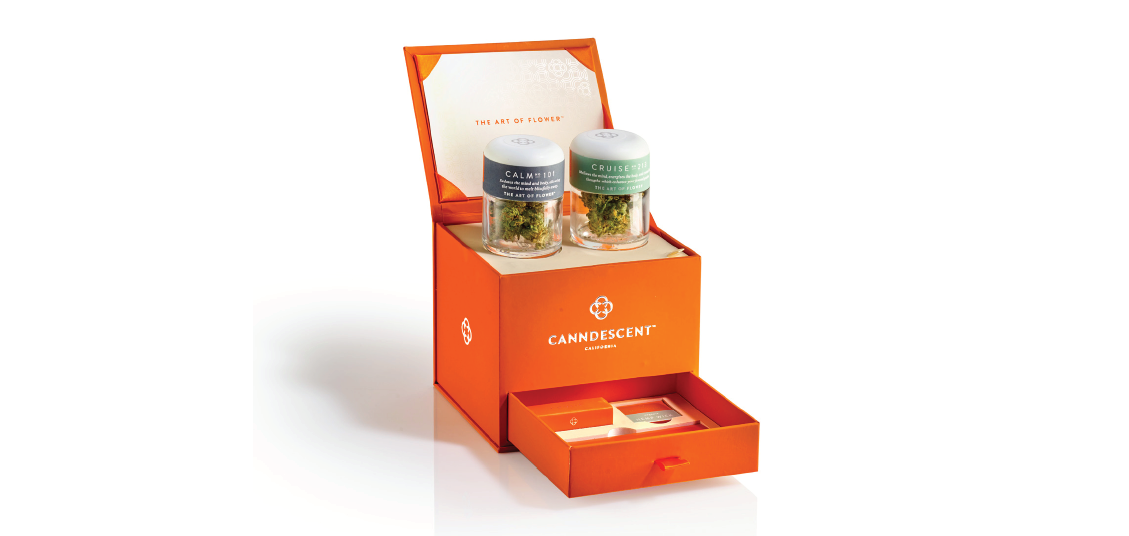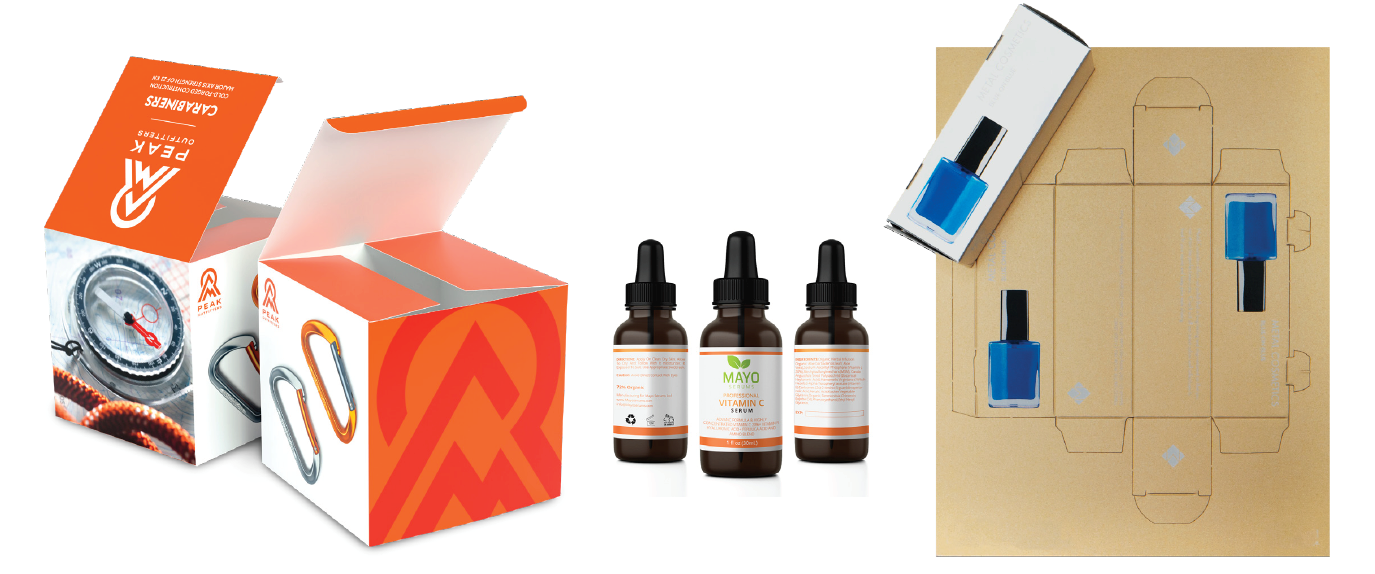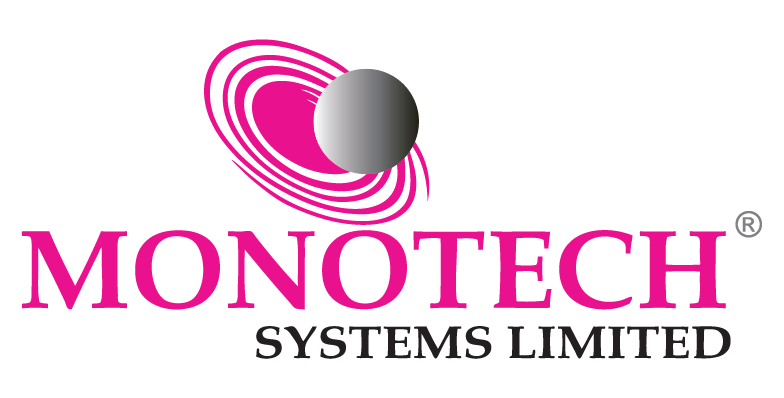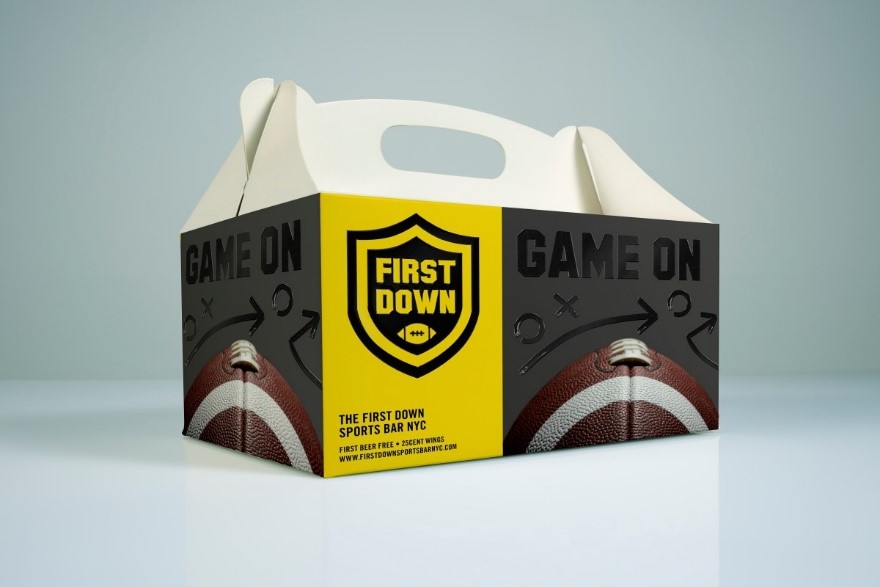Are you ready to tap into new digital printing revenue streams? Whether you have toner-based devices or a new inkjet installation, the packaging is one of today’s hottest growth opportunities in print. This segment is experiencing healthy growth, is supported by multiple applications, and will never be displaced by electronic media. Although the package printing market is certainly not new, there are still plenty of emerging opportunities that commercial printers can capitalize on by working with existing customers or attracting new ones.
For digital printing, the best opportunities for commercial printers are in the short-run production of folding cartons, labels, and even some corrugated applications. There are countless ways to engage in the growing package printing market, from boxes for homemade goods to restaurant takeout containers to test runs of new package designs.
Packaging: The Basics
By definition, the packaging is the material that surrounds a consumer item, but it does much more—it identifies, describes, protects, displays, and promotes a product and its brand. Attractive packaging designs and graphics can attract attention, create brand differentiation, and drive loyalty. Packaging is the last chance a marketer gets to influence a consumer’s purchasing decision, and is key to differentiation and improving the customer experience.

The Growth of Digital Print in the Packaging Market
Keypoint Intelligence – InfoTrends estimates that the global retail value of color digital labels, folding cartons, and corrugated packaging will approach $18 billion by 2023. Label printing, the largest segment for digital printing within the packaging market, represented over $5.1 billion in the global value of print in 2018 and is expected to show a compound annual growth rate (CAGR) of 14% through 2023. Corrugated, the next-largest segment is expected to reach about $6.8 billion by 2023 (39% CAGR). Meanwhile, digital printing of folding cartons is expected to achieve a 20% CAGR to net about $1.2 billion in print sales in 2023.1
Table 1: Global Retail Value of Labels, Folding Cartons, and Corrugated ($Millions)

Three Drivers for Digitally Printed Packaging
Three factors combine to make digital printing essential to the packaging market:
1. The need for short runs: To enable mass-customization and operational efficiency, brands are increasingly ordering print more often and in smaller amounts. Brands thus want localized versions, event-related goods, and packaging for consumers in different age groups and family situations. They also want to respond quickly to market changes or events, and they don’t want to pay for wasted inventory. Smaller brands are often good prospects for commercial printers that are hoping to expand into packaging. Examples include local/speciality food manufacturers; brewers and wineries; producers of nutritional supplements, vitamins, or cannabis products; or small crafters.
2. Improved technology: Digital printing equipment vendors are leveraging technological advancements to develop innovative products. For example, EP printers like Ricoh’s Pro C9200 can print paperboard media suitable for folding cartons or blister card packages, which are good applications for commercial printers. For converters that specialize in printing packaging, digital technology is an established complement to offset and flexo equipment. Using digital to handle short runs increases overall efficiency, and analogue devices can remain focused on the long runs where they excel.
3. Market acceptance: Digital printing has established itself as an asset to brands and the companies that print packaging for them. Packaging converters that have adopted digital printers to complement their analogue presses have become skilled at promoting and selling digital printing. Brand owners have come to accept digital printing as a helpful option; they value its ability to produce variable data, which enables them to localize packaging for regional markets, customize packaging for events or holidays, or even personalize a product to a specific individual
Digital Packaging Application Ideas to Consider
Small format digital printing opportunities are also valuable to a wide range of potential clients. Commercial printers can produce applications like folding cartons, shelf-talkers, labels, and corrugated packaging and displays with the digital printers that they already own or might be able to acquire with a small investment.
Small folding cartons, shelf-talkers, blister card packaging and POP applications such as small signs made from paperboard can often be printed on the A3-sized EP devices used by commercial printers.
Ricoh’s products offer expanded substrate capabilities and fifth-colour options, which help print small paperboard-based packages for a variety of industries (e.g., pharma/nutraceutical, personal care, wine).
Corrugated represents another possible application. Free-standing store displays like “end caps” are often printed on corrugated materials by the same wide-format inkjet printers that many commercial printers use to print signage. These devices can also print test versions of corrugated packaging; such prototypes are important for corrugated packaging manufacturers because big flexo plates for one corrugated print job can cost thousands of dollars.
Labels for products like wine and canned goods are normally printed on roll stock to yield printed media for use in automatic label applicators. Small label “web printers” can range in price from under $10,000 to about $200,000 and can compete for label jobs from a wide range of businesses.
Figure 2: Examples of Blister Cards, Folding Cartons, Labels, and Corrugated

Exploring Prospects for Packaging Applications
Digital packaging application opportunities can come from existing customers as well as prospects. When considering which applications to offer, think about your existing clients and new markets you’d like to explore. For example, maybe you’re already selling marketing collateral or printing transactional communications for a market that is a prime candidate for creative packaging.
Small folding cartons that can be produced on A3-sized digital sheet printers are quite close to commercial printing in terms of media and finishing. Great prospects for folding carton print jobs include cosmetics, jewellery, and luxury goods—all of which have a regular need for the short run, high-quality packaging. Small cartons that help promote a brand, or just fill the need for short-run production, also enhance the prospects for digital printing. For example:
- Banks and financial services firms often create event-related promotional gifts or welcome packages for new customers, representing a short-run packaging opportunity.
- Items like painted scarves and customized earrings can fit into lipstick-sized boxes and be customized for clients in small batches.
The rapidly-growing U.S. cannabis market represents another interesting opportunity. Although no legal business existed a few years ago, now thousands do, and many of them are small and regional in scope.2 Many of these companies offer multiple products and are just beginning to establish themselves.
The “SlideBox CR” folding carton, a patent-pending design by All Packaging Co of Colorado, is printed by sheet-fed offset on 18 pt. solid bleached sulfate (SBS) paperboard. The young U.S. cannabis market uses various packaging formats, including bottles, bags, and tubes. Small folding cartons are particularly attractive to cannabis brands because of their historic role in cigarette packaging.
The same is true for the E-cigarette industry, where vaping supplies can also be packaged in small folding cartons that carry brand imagery; note that the product shown here is cannabis in vape cartridges.

Knowing what you can print and finish is important, but so is knowing how to pitch your capabilities to current and prospective clients. Start with an assessment of your existing offerings. Who are the logical targets for your first packaging pitches? Build a story that will resonate with them. Do you work with event organizers? Pitch event welcome packages in personalized boxes that can contain event collateral and welcome gifts. Do you work with community organizations, sports leagues, or independent sales agents? The same boxes or labels can work for them as well. Start by building a prototype, then show what’s possible when you apply the power of digital to the packaging opportunity. A set of print samples will be essential, and this could include cartons as well as labels.
Getting Started: Implementation
Get started with this easy three-step process:
- Begin by Assessing Your Technical Capabilities.
- For folding cartons, what is the largest size sheet you can print? On a roll-fed press, what is the longest sheet you can produce? These considerations are important because they tell you the largest size box you can produce—and don’t forget to account for flaps and folds!
- Next, identify the heaviest substrate you can print. Check with your technical support team to determine if there are specific requirements for printing on heavier stocks and build those requirements into your workflow.
- For labels, explore substrate and printing options and then compare them to the requirements of the given application (e.g., environmental resistance or colour matching). Most packaging labels are roll format because the label applicators require them. There are many inexpensive digital roll label printers available, based on EP and inkjet technologies.
- Consider Your Job Onboarding Process.
- If you’re using a web-to-print solution, consider the information it captures. Will you need to add fields or a new set of dialogues to capture information for new products? Is your web-to-print tied to your estimating and quoting engine? If so, you’ll want to update those tables to ensure that pricing is accurate.
- Sales teams will need accurate pricing solutions, so estimating and quoting engines may need to be updated along with any spreadsheets or other tools in use.
- Consider Ancillary Tools and Processes.
- Adding packaging printing will attract new customers and jobs, but it will also bring workflow concerns. Your company’s existing tools might be able to easily handle the influx of a small number of short runs, but what about a higher number? Your existing design tools may work well for labels, but they might not lend themselves to folding cartons where the goal is a three-dimensional package.
- Account for finishing—only in lower-value packaging (like cartons or labels made with pre-die cut media) is finishing minimal or very simple. Most packaging applications need one or more processes that must be executed as expertly as any printing process.
A Focus on Finishing
Again, finishing is usually a vital part of package printing, and it has its considerations. For cartons and similar products, you’ll need to be able to cut printed paperboard media that’s at least 18 points in thickness (about 385 GSM). Although thicker folding carton media is much less common, it can run up to 24 points (about 450 GSM). Folding carton cutting is normally handled with mechanical dies to cut the package form from the sheet; it can also be done with a laser cutter and electronic template files.
Finishing for labels has the same concepts at its core, but the processes are configured differently, primarily because most labels for primary packaging are printed on roll media. As in folding cartons, nearly all cutting is done by analogue dies, but laser cutting is also an option. As with folding carton cutting, though, laser cutting is expensive and slow compared to analogue—whereas an analogue die cutter or cutting station may cost $10,000 to $50,000, a laser cutter version will cost from six to ten times that price and cut at less than half the speed. In fairness, though, the laser has two compelling advantages for both labels and cartons. First, it needs no dies, which are costly and time-consuming to make. Second, laser cutting enables infinite design variations, making it great for cutting short runs and a natural complement to digital print.
While cutting is the most widely used finishing process, there are others to consider, including some that are rarely used in commercial printing:
- Lamination: Adding a film layer to a package increases durability and environmental resistance. Some product categories, such as household chemicals and products that will be used outdoors, have a natural need for it. A lamination station is a common addition to a digital label web.
- Foiling: Cosmetics and luxury goods often use foil on packaging to enhance their appearance and deter counterfeiting. Cold foil is by far the most common type because it applies more quickly than hot foil at a much lower cost.
- Tactile Effects: Print and decorative design elements that the consumer can feel on the carton or label are sometimes added in a separate finishing process. Inkjet printing technology is now commonly used for achieving such effects, thanks to UV curing inkjet printers and finishing systems.

Wrapping it Up
Understanding what you can print and finish is important, but so is knowing how to pitch your capabilities to clients and prospects. Start with an assessment of your existing offerings, determine the logical targets for your packaging pitches, then build a story that will resonate with them. If you work with event organizers, pitch welcome packages in personalized boxes that can contain event collateral and welcome gifts. If you work with community organizations, sports leagues, or independent sales agents, the same boxes or labels can also work for them. A set of print samples is essential, and it might include cartons as well as labels. You could also go further by building a prototype that highlights the possibilities of adding digital to packaging.
Many companies buy package printing services, and they likely include some of the businesses that your printing operations already serve. Digital printing is a creative, helpful application for packaging, so think about how your company could become a profitable provider of print services for this segment!
- All references cited here are from Keypoint Intelligence – InfoTrends.
- According to market research firm Statista, in 2017 there were 1,600 makers of cannabis-infused products in the U.S., plus 3,300 retail outlets and 13,000 makers of ancillary products.
Explore Ricoh Pro C7200X Graphics Art Edition Digital Production Press























